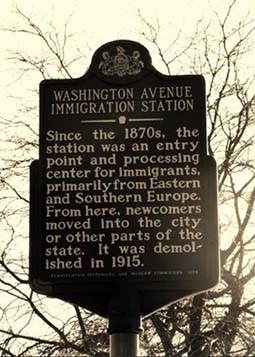On Saturday morning, April 19, a small group of intrepid volunteers showed up at Washington Avenue Green to collect trash. In two hours they filled eight large bags with candy wrappers, paper bags, and empty bottles. One of the workers found a tent pole left behind by one of the recently departed illegal campers. The homeless encampments are gone. The Delaware River Waterfront Corporation had already cut back the winter underbrush and removed dead branches. The beach constantly changes. The tide brings in debris from upriver twice a day, and then takes it away. After major storms, there's usually the remains of dead trees and an additional collection of trash from parts unknown.
The warmer weather will be seeing more visitors to the park. Washington Avenue Green/Pier 53 is not only a place of historical significance but also of ecological interest. Migrating birds arrive from the south during this time of year and take up residence here in the summer months. |
Some of the birds stay in Philadelphia all year round. Due to global warming there may be a greater variety in the future. And ongoing is a study of bees. They make their homes in non-urban areas as well as in formerly urban and abandoned areas, such as Pier 53. Where did the bees originally come from, and how had they evolved to fit into a changed habitat? Matthew Donahue, a scientist at the Department of Ecology and Evolutionary Biology at the University of Connecticut wants to find out. For further information, here's the link to our page on this site. Ecology. In the Works. A unit of the Pittsburgh-based Railroad Development Corporation (RDC), has proposed a ‘Pop-Up Metro’ which would begin at Race Street Pier just below the Ben Franklin Bridge and run south from there to a point somewhere between Queen and Reed Streets, allowing easy access along the river to several popular waterfront attractions, including Race and Cherry Street piers, Penn’s Landing, Spruce Street Harbor Park, and Pier 53. |
The Pier 53 Project—a historical study of the immigrants who arrived at the Pier from 1876 to the 1920s, their stories, and the stories of their descendants. Each story is part of a mosaic that contributes to the history of Philadelphia and its waterfront, and ultimately to the history of immigration in the United States. Here's the link to the Pier 53 Project page on this site. Pier 53 Project. All photos by Susan McAninley. |


